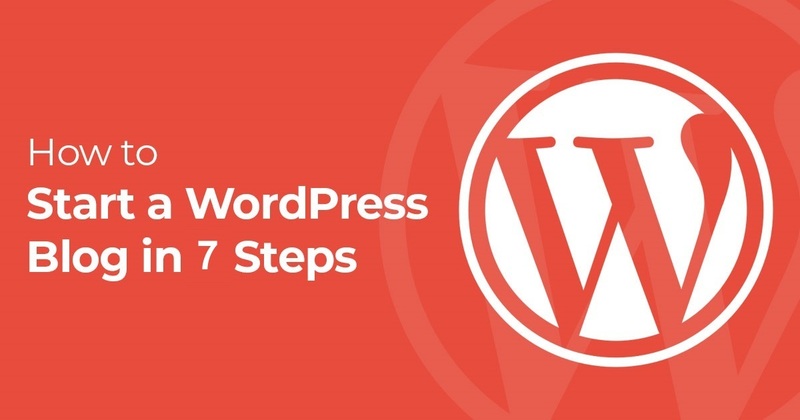Starting a WordPress blog can be one of the fastest and most rewarding ways to build an online income stream. It provides a platform to share your expertise, connect with like-minded individuals, and even turn your hobbies into a source of income.
Blogging offers unparalleled flexibility, you can work from anywhere and set your own schedule while building a brand that’s entirely yours.
If you’re looking to create content around a passion, launch a side hustle, or even start a full-time business, this guide will take you step-by-step through the process.
From selecting the perfect niche and setting up your blog to creating engaging content and monetizing your efforts, you’ll learn everything you need to start earning money fast.
Step 1: Find Your Niche
Before creating your blog, it’s essential to decide on a niche. A niche is the specific topic or category your blog will focus on. Picking the right niche is crucial for success. Here’s how to choose one:
- Identify Your Interests and Skills: What are you passionate about? What can you write about consistently?
- Research Market Demand: Use tools like Google Trends or SEMrush to see if there’s an audience for your topic.
- Assess Competition: While some competition is good, avoid overly saturated markets where it’s hard to stand out.
Popular niches include:
- Health and fitness.
- Personal finance.
- Food and recipes.
- Technology and gadgets.
- Travel.
Step 2: Set Up Your Blog
Once you’ve chosen a niche, it’s time to set up your WordPress blog. This step involves selecting a domain name, hosting provider, and customizing your blog’s appearance.
a. Choose a Domain Name
Your domain name is your blog’s address on the internet (e.g., yourdomainname.com). Make sure it’s:
- Short and easy to remember.
- Relevant to your niche.
- Avoids numbers or hyphens.
You can register a domain through providers like Namecheap, which offers affordable options and excellent service.
b. Select a Hosting Provider
Your hosting provider stores your blog’s files and makes them accessible online.
- Recommended: Namecheap for its budget-friendly plans.
- Alternatives: Bluehost, SiteGround, or WP Engine for higher performance.
Choose a hosting plan and follow the instructions to connect your domain to your hosting.
c. Install WordPress
For Namecheap users, installing WordPress is simple and can be done in a few easy steps:
- Log in to Your Namecheap Dashboard: After purchasing your hosting plan, navigate to your hosting account.
- Access cPanel: Locate and click on the cPanel link in your hosting dashboard.
- Open Softaculous Apps Installer: In the Software section, find and click on ‘Softaculous Apps Installer.’
- Search for WordPress: In the Softaculous interface, type “WordPress” in the search bar and select it.
- Click on ‘Install Now’: Begin the installation process by clicking the “Install Now” button.
- Choose Your Domain: Select the domain where you want to install WordPress. If you have multiple domains, ensure you select the correct one.
- Set Up Admin Details: Enter your preferred admin username, password, and email address. These credentials will allow you to log in to your WordPress dashboard.
- Configure Basic Settings: Adjust settings like site name and tagline if needed.
- Complete the Installation: Click “Install” to finalize the process. You’ll see a success message once installation is complete.
After installation, you can log in to your WordPress dashboard by visiting yourdomain.com/wp-admin and start building your site.
d. Pick a Theme
A theme determines your blog’s appearance. Look for free or premium themes that are responsive, fast, and customizable.
Popular options include:
- GeneratePress
- Astra
- OceanWP
Step 3: Install Essential Plugins
Plugins add functionality to your WordPress blog. Here are some must-haves:
- SEO: Yoast SEO or Rank Math.
- Speed Optimization: W3 Total Cache or WP Rocket.
- Security: Wordfence.
- Analytics: Google Site Kit, which integrates not just Analytics but also Search Console and other tools.
- Backup: UpdraftPlus.
Install and activate these plugins through your WordPress dashboard.
Step 4: Create High-Quality Content
Content is the heart of your blog. To attract readers and keep them coming back, focus on creating valuable, engaging posts. Here are some tips:
- Keyword Research: Use tools like SEMrush or Google Keyword Planner to find topics people are searching for in your niche.
- Content Types: Write tutorials, how-to guides, product reviews, and listicles.
- Stick to a Schedule: Consistency builds trust and keeps your audience engaged.
Pro Tip: Make your content visually appealing by adding images, infographics, and videos. Use free tools like Canva to create custom visuals.
Step 5: Monetize Your Blog
Once your blog is live and you’ve started publishing content, it’s time to explore ways to make money. Here are the most effective methods:
a. Affiliate Marketing
Promote products or services related to your niche and earn a commission for every sale made through your referral links. Join affiliate programs like:
- Amazon Associates.
- ShareASale.
- CJ Affiliate.
b. Advertisements
Sign up for ad networks like Google AdSense to display ads on your blog. As your traffic grows, consider premium ad networks like Mediavine or AdThrive.
c. Sponsored Posts
Partner with brands to create content promoting their products. Sponsored posts can be highly lucrative, especially in established niches.
d. Sell Products or Services
Create and sell digital products such as eBooks, courses, or templates. If applicable, offer services like consulting, coaching, or freelance writing.
Step 6: Drive Traffic to Your Blog
Without traffic, monetization efforts will fall flat. Here are proven ways to attract visitors:
a. Search Engine Optimization (SEO)
- Optimize your posts for target keywords.
- Use internal and external links.
- Write compelling meta descriptions.
b. Social Media Marketing
- Share your posts on platforms like Facebook, Twitter, Instagram, and Pinterest.
- Engage with your audience and encourage them to share your content.
c. Email Marketing
Build an email list using tools like Mailchimp or ConvertKit. Send regular updates, newsletters, and exclusive content to your subscribers.
d. Guest Blogging
Write guest posts for established blogs in your niche to build backlinks and reach a larger audience.
Step 7: Scaling and Making Money Fast
Once your blog gains traction, focus on scaling your efforts:
- Outsource Tasks: Hire freelance writers, graphic designers, or virtual assistants to free up your time.
- Invest in Paid Ads: Use Google Ads or Facebook Ads to drive targeted traffic.
- Focus on High-Ticket Affiliate Products: These can significantly boost your income.
- Experiment with Advanced Strategies: Dive into advanced SEO techniques, explore new content formats like webinars, or start a YouTube channel to complement your blog.
Conclusion
Launching a WordPress blog and making money fast is achievable with the right strategy. From picking a profitable niche to monetizing effectively, each step brings you closer to success. By focusing on high-quality content, driving traffic, and diversifying income streams, you can turn your blog into a thriving online business.
Take the first step today—your future readers (and earnings) are waiting!







